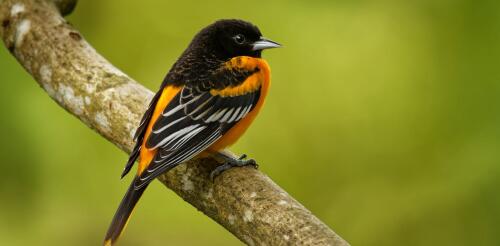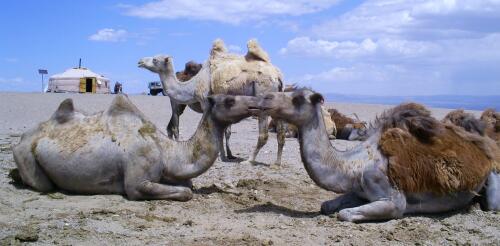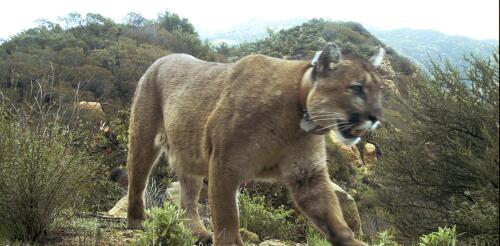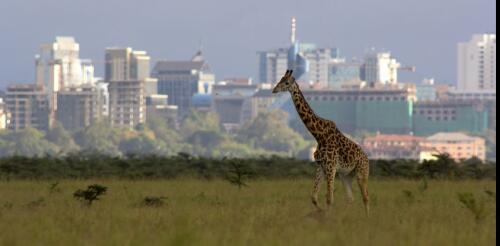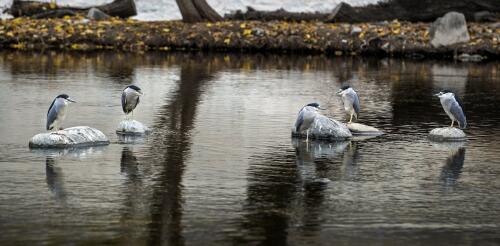Wildlife conservation
Activities associated with cocaine trafficking threaten two-thirds of the most important landscapes in Central America for 196 forest bird species, including 67 migratory species. This is the key takeaway from a study that colleagues and I published in June 2024 in the journal Nature Sustainability. Our findings suggest that there is real potential for drug-related deforestation to negatively affect populations of migratory birds. Many of these species are unusually concentrated in winter in Central America, which has a comparatively smaller area than their summer breeding regions in North America. For 1 in 5 migratory species that travel to Central American forests annually, including familiar birds like the Baltimore oriole, more than 50% of their global population winters in areas that are becoming more attractive to traffickers. For half of migratory species, at least 25% of their populations winter in these areas. Baltimore orioles...
Fatal attractions are a standard movie plotline, but they also occur in nature, with much more serious consequences. As a conservation biologist, I’ve seen them play out in some of Earth’s most remote locations, from the Gobi Desert to the Himalayan Highlands. In these locales, pastoralist communities graze camels, yaks and other livestock across wide ranges of land. The problem is that often these animals’ wild relatives live nearby, and huge, testosterone-driven wild males may try to mate with domestic or tamed relatives. Both animals and people lose in these encounters. Herders who try to protect their domestic stock risk injuries, emotional trauma, economic loss and sometimes death. Wild intruders can be displaced, harassed or killed. These clashes threaten iconic and endangered species, including Tibetan wild yaks, wild two-humped camels and Asia’s forest elephants. If the wild species are protected, herders may be forbidden from chasing or harmin...
Rats thrive around humans, for good reason: They feed off crops and garbage and readily adapt to many settings, from farms to the world’s largest cities. To control them, people often resort to poisons. But chemicals that kill rats can also harm other animals. The most commonly used poisons are called anticoagulant rodenticides. They work by interfering with blood clotting in animals that consume them. These enticingly flavored bait blocks are placed outside of buildings, in small black boxes that only rats and mice can enter. But the poison remains in the rodents’ bodies, threatening larger animals that prey on them. My colleagues and I recently reviewed studies from around the world that sought to document wild mammal carnivores’ exposure to anticoagulant rodenticides. Many animals tested in these studies were already dead; others were alive and a part of other studies. Researchers detected rodenticides in about one-third of the animals in these analyses, i...
Human-wildlife overlap is projected to increase across more than half of all lands around the globe by 2070. The main driver of these changes is human population growth. This is the central finding of our newly published study in the journal Science Advances. Our research suggests that as human population increases, humans and animals will share increasingly crowded landscapes. For example, as more people move into forests and agricultural regions, human-wildlife overlap will increase sharply. It also will increase in urban areas as people move to cities in search of jobs and opportunities. Animals are also moving, mainly in response to climate change, which is shifting their ranges. Across most areas, species richness – the number of unique species present – will decrease as animals follow their preferred climates. But because human population growth is increasing, there still will be more human-wildlife overlap across most lands. We also found areas where human-...
The Earth is losing animals, plants and other living things so fast that some scientists believe the planet is entering its sixth mass extinction. But there’s some surprising good news: Urban areas may be key to slowing down or even reversing this crisis. This idea may seem counterintuitive, since studies show that urbanization is a big driver of biodiversity loss. Cities alter the environment with artificial lighting and noise pollution, which affect many species. And urban land cover is expected to increase by 2.5% globally between 2000 and 2030 as more people move to cities. As one measure of urbanization, half of the continent of Europe is less than 1 mile (1.5 kilometers) from a roadway or railway line. No location on the continent is more than 6 miles (10 kilometers) from these features. But there are ways for cities to use nature-based solutions to slow species loss within their borders. At a major international conference on biodiversity loss in 2022, global lead...
